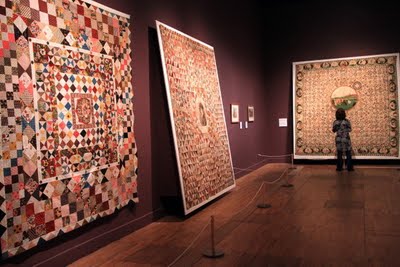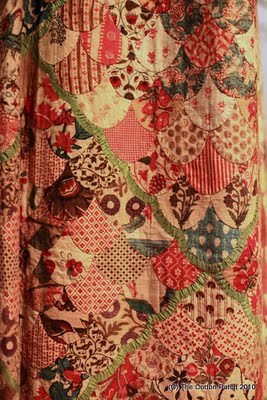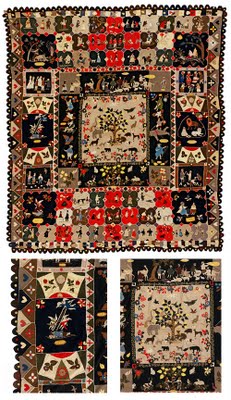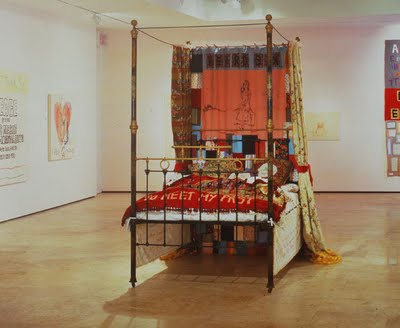These quilts are all in the first section and for those who loves historical quilts are a really superb collection. I really should be doing some accounts...so...more photos to follow soon.
The quilt detail shown below is from George III Reviewing the Troops (1803-1805). The construction is technically brilliant and reveals details of the makers life and her social and cultural background. This detail shows just a small section of the quilt below the main centre circle of George III. Vignettes made up of between 23 and 45 patches, hand-drawn inscriptions and embroidery form a border surrounding pieced circles.
This Mariner's Quilt is displayed as it would appear on a bed - again beautifully constructed and preserved. This quilt was made in the 1850's and includes fabrics dating from the 1820's. The mid to late 1800s style was for dense colours and bright patterns. Patchwork designs were produced in magazines and gradually evolved their names such as Mariner's Compass (the centre design) and Jockey's Cap (the circles partially seen in the foreground of the picture below.)
The quilting on this one showed up beautifully in the subtly lit gallery and again displayed bed-style.
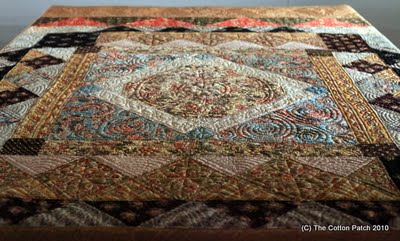
Labels: George III Reviewing The Troops, Mariners Compass, Quilts 1700-2010, Victoria and Abert Museum
